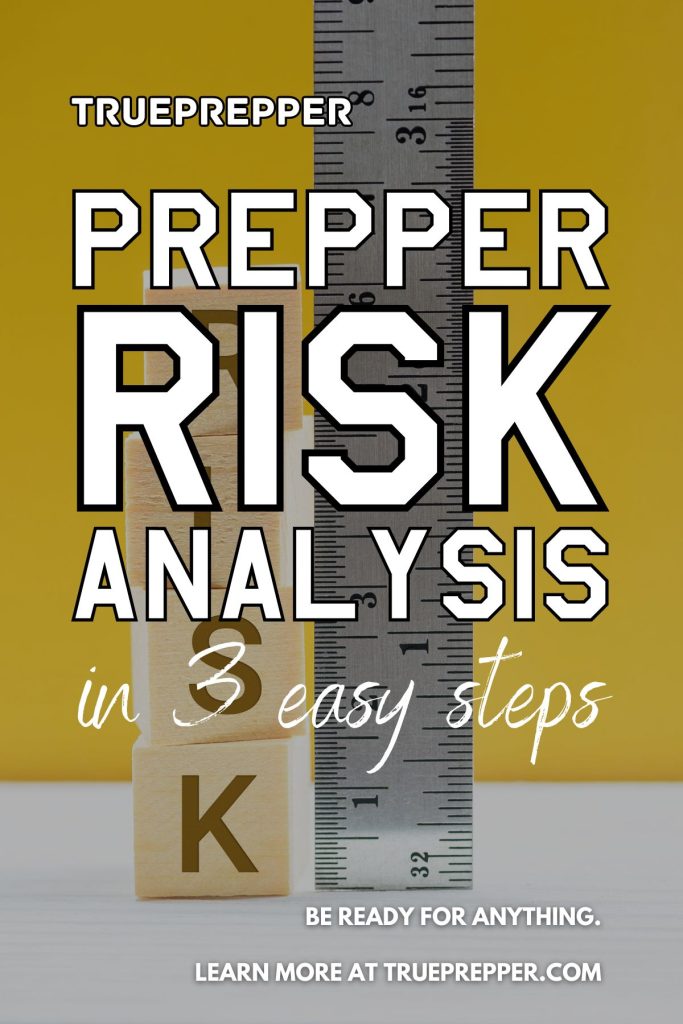
Introducing a comprehensive guide for all you emergency preparedness enthusiasts out there – welcome to the world of risk analysis! You may not even realize it, but you're employing risk analysis each time you make preparations for emergencies. This guide aims to give you a better grasp of what risk is and how to use risk analysis techniques to enhance your readiness for emergencies.
Unraveling the Mystery of Risk
According to Merriam-Webster, risk is synonymous with the probability or chance of potential loss or injury. But in the context of risk analysis, this concept gets broken down into two distinct elements: probability and impact. Probability refers to the likelihood of something happening, whereas impact pertains to the potential loss or harmful consequences that might result from it. You'll find these terms used frequently throughout this guide as we delve into different scenarios and the steps involved in conducting your risk analysis.
The Essence of Risk Analysis
Risk analysis forms a critical component of your emergency preparedness strategy. It involves identifying potential hazards, evaluating their associated risks, and preparing for them accordingly. To clarify the terms: a hazard is an identified risk with known or unknown probability and impact. Probability is a measure based on historical data or theoretical calculations of possible occurrences, whereas impact refers to the possible damage inflicted by the hazard. These terms aren't mere labels; they come with several assumptions and calculations that are typically computed using average or worst-case scenario models.
Implementing Risk Analysis for Emergency Preparedness
Following a structured process for risk analysis can help you identify gaps in your emergency preparedness. Here's a three-step process to get you started:
Step 1: Pinpoint Potential Hazards
Begin by listing down all the potential threats that may affect you. There are myriad threats already identified from general risk assessments – try adding to those that you think could be relevant. Remember, don't panic if the list of possible disasters, emergencies, and attacks starts overwhelming you – it’s only a list of potential hazards.
Step 2: Evaluate the Risk of Each Hazard
In the next step, assign a ranking to each identified hazard based on its risk factor. Risk can be assessed based on the likelihood of the hazard happening and its possible effects. While historical data, algorithms, and computers can help in quantifying risks, a qualitative evaluation based on common sense and general knowledge is simpler and typically sufficient. Labeling hazards as ‘high,' ‘medium,' and ‘low' is a straightforward way to gauge their inherent risks.
Step 3: Managing Risk
Deciding an order of priority for dealing with each hazard is your risk management strategy. Feel free to discard hazards with low probability and low impact from your list. You may revise the risk analysis in the future to include more threats if need be. Dictating their importance based on your level of preparedness and the threat they pose is an effective way to manage hazards.
The Road Ahead
Congratulations on completing your risk analysis process! Now channel your efforts into developing a concrete plan, assembling a survival kit, and practicing your strategies for different scenarios. Depending on the results of your risk analysis, you might realize the need for some specialized kits along with the main survival kits. Remember to revisit and update your risk analysis as your life circumstances or living conditions change so that you continue to stay prepared. Explore, prepare, and stay safe, fellow preppers!
—————————————————————————————————————————————————————————————–
By: Rusty Collins
Title: Mastering the Art of Risk Analysis for Emergency Preparedness
Sourced From: www.trueprepper.com/prepping-risk-analysis/
Published Date: Sat, 07 Oct 2023 11:23:08 +0000


